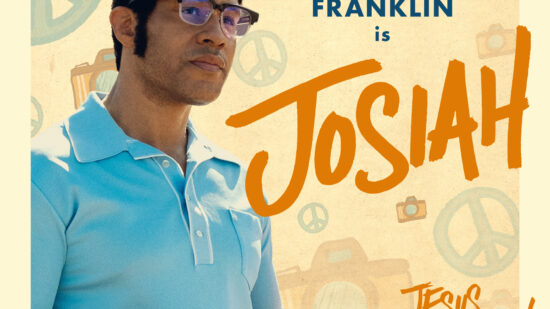by Dick Rolfe & Tabitha Blanski
 Picture an ordinary American family during a typical evening. Twelve-year-old Emily holds her tennis racket like a microphone as she rocks out to Miley Cyrus’ newest hit song. Emily’s older brother Matt tries to drown out the noise by turning up the volume on his National Treasure DVD. Dad moves to the rec-room to watch the NFL Playoffs on ESPN, while mom, finished with dishes, escapes to the bedroom for an inspiring episode of Extreme Makeover, Home Edition. Six-year-old Bobby can be found in his room surrounded by his collection of Penguin Club characters.
Picture an ordinary American family during a typical evening. Twelve-year-old Emily holds her tennis racket like a microphone as she rocks out to Miley Cyrus’ newest hit song. Emily’s older brother Matt tries to drown out the noise by turning up the volume on his National Treasure DVD. Dad moves to the rec-room to watch the NFL Playoffs on ESPN, while mom, finished with dishes, escapes to the bedroom for an inspiring episode of Extreme Makeover, Home Edition. Six-year-old Bobby can be found in his room surrounded by his collection of Penguin Club characters.
It would seem impossible for one group to cater to the entertainment needs of every member of this family with such diverse interests. But tonight, they can all thank the same iconic organization for their wide array of entertainment choices; The Walt Disney Company. The average householder may not realize the ubiquitous nature of this media conglomerate and how it impacts them daily on so many levels. In addition to the movie studio, there’s The Disney Channel, ESPN, ABC, Capital Records, and now the newly acquired Marvel Comics. These are just a handful of the pieces that make up the whole of The Walt Disney Entertainment Company.
For most people, the Disney name conjures images of princesses, friendly talking mice, and idyllic family vacations – and for good reason. Disney management teams have spent seven decades of TLC and billions of dollars to create and maintain their world famous family friendly image. Disney is a powerhouse in the entertainment field, producing hits ranging from Snow White to Scary Movie. With news of many looming changes as the mergers and acquisitions with Pixar, DreamWorks, and now Marvel, this is a good time to retrace the trail Disney has blazed to reach their current pinnacle; and to speculate a bit on where Disney may be headed next.
How did this media magnate spring up from a mouse and small collection of hand-drawn fairy tales?
Snow White, the first feature-length animated motion picture launched the Disney studio in 1937 with subsequent films retaining the G rating until 1979’s The Black Hole, rated PG for sci-fi violence, peril and thematic elements. About the time of the release of the studio’s 1983 Trenchcoat, critics complained that PG films contained too much adult content and were simply not appropriate for Disney’s established audience. Disney needed to separate their more mature, but profitable, PG films from their long line of films primarily for children. Thus, in 1984, Touchstone Pictures was born. Splash, the story of a mermaid and city boy sans singing crab, was the first picture released under that label. The film was a huge success at the box office making back almost 10 times the amount it cost to produce and garnering Academy attention with nominations in the Best Original Screenplay category. Disney had found a way to affectively reach a new audience without tarnishing Cinderella’s name.
After the financial success of Touchstone Pictures, Disney must have thought that adding yet another studio label was a good move. Hollywood Pictures first appeared in 1990 with the release of PG-13 rated horror-comedy Arachnophobia, starring Jeff Daniels and John Goodman. The new line had few box office successes, the most notably being The Sixth Sense, with Haley Joel Osment and Bruce Willis. But the Hollywood Pictures label underperformed.
Disney’s original strategy behind the label is hard to pinpoint, but the type of pictures the studio released suggests it was intended to serve as a sort of art-house/independent/genre studio. Hollywood Pictures fell by the wayside when in 1993 the Weinstein brothers partnered their 13-year-old independent studio, Miramax, with The Walt Disney Company in an $80 million dollar deal. And R-rated avant-garde films like Pulp Fiction and Tie Me Up! Tie Me Down!
The Weinstein’s brought an established production line to the table and Disney provided funds and worldwide distribution. Pegged as the art-house/independent film division of Disney, Miramax’s most successful project was Chicago, a filmed adaptation of the Broadway musical hit.
The relationship with the Weinsteins was profitable, but publicity began to impact the wholesome Disney brand and in 2005, Disney decided not to renew the contract and the Weinstein’s left to form their own company. Disney maintained the Miramax label with its prolific art-house studio. What the Weinsteins did take with them was the Dimension Films label, which used to make Miramax genre films. To fill this gap, Disney resurrected Hollywood Pictures as their B-picture studio. The first genre piece, Stay Alive, was produced in 2006.
Disney’s partnership with Pixar involved a bit more luck. Unlike the long-term commitment with Miramax, Pixar entered into a short-term three film agreement with Disney in 1991, beginning with Toy Story. After that smashing success Pixar began to realize they had been given the short end of the stick. Although the profits were split fifty-fifty, Disney was paid a fee for their distribution work and received exclusive rights to all stories and sequels.
Pixar pushed for a new deal in 2004, in which Pixar would only pay Disney for distribution while retaining all rights and total control over the projects in production. Disney turned it down and negotiations didn’t resume until September of after Disney CEO Michael Isner resigned in 2005.
Robert Iger, the new head of Disney, moved ahead as soon as he took office and renegotiated a Pixar-Disney deal in January of 2006, giving Pixar $7.4 billion dollars in stock and conditions to keep Pixar a separate entity.
A new branch of Disney began to grow in April of 2008. Disneynature, operating out of France, was announced as an independent Disney film label, intent on releasing big screen nature documentaries. The first film, Earth, appropriately premiered in the U.S. on Earth Day in April of 2009, though it had been released in cinemas internationally in 2007. Disneynature is the first new label created by Disney to openly bear the powerful Disney name. The logo for the new studio emphasizes the connection, featuring an iceberg that resembles Disney’s iconic castle logo.
In February of 2009, DreamWorks entered into a long-term, 30-picture distribution deal with Disney. The films, which will be released under the Touchstone banner, will span the next 5 years. While Disney had no need to replace Touchstone, Disney’s Iger has announced plans to pull back on funding Touchstone pictures and produce fewer adult action pictures. (Why Disney Wants DreamWorks). Some speculate this is an attempt by Disney to form a closer partnership with the famous director Steven Spielberg.
As in the original merger with Pixar, Disney is expected to take in a 10% distribution fee but will also lend DreamWorks $100 million to close the deal. The new relationship with DreamWorks appears to be a safe way for Disney to invest in another “Touchstone” studio without suffering the same financial losses that Touchstone has caused over the last few years. It is a low-risk option where Disney makes money through distribution while DreamWorks navigates the storms of box office success and failure as production partner.
The most recent Disney acquisition came at the end of August 2009 with the news that the Walt Disney Company purchased Marvel comics for $4 billion. Both 20th Century Fox and Paramount had appeared to be developing a good relationship with the comic book line, producing such hits as Iron Man and the X-Men series, but the new merger has severed those relationships. Under this deal, Disney is now the proud owner of more than 5,000 comic book characters and a wealth of story creation experience. The merge is said to be comparable to the latest agreement reached with Pixar, where Marvel will continue to control much of its own content internally. What no one seems to be talking about is the fact that Marvel already has a full distribution line, something Disney seems to be very keen on holding on to in all previous mergers and acquisitions.
With the overwhelming success of the Pirates of the Caribbean franchise, the first PG-13 films bearing the Disney label, a new era of content appears to have found acceptance under the Disney banner. Iger and then-studio chairman Dick Cook, decided to seriously shift focus back to the Disney brand and produce fewer Touchstone and Miramax pictures.
Rumor has it that Marvel comic characters will begin popping up in Disney theme parks around the world soon. (After all, it worked for Capt. Jack Sparrow.) With potentially complicated adult action stories found in the superhero genre’ the Mouse House should remain mindful of their younger audiences and the cautious parents who protect them. The wholesome Disney label has proven rock solid throughout past generations. It will be worth watching to see how studio executives handle these new action characters in light of Disney’s kid-friendly reputation.
As more diverse films join the Disney film family, one can only hope that Disney’s path to success will continue to evoke images of princesses, family, and true heroes. As fewer parents complain about content, one can only hope that the next generation of children can clearly see the differences between good and evil in their entertainment diet. As big ideas grow in a company founded on big ideals, may Disneyland always remain a place where Walt Disney’s words ring true:
“To all who come to this happy place; welcome. Disneyland is your land. Here age relives fond memories of the past…and here youth may savor the challenge and promise of the future. Disneyland is dedicated to the ideals, the dreams and the hard facts that have created America…with the hope that it will be a source of joy and inspiration to all the world.”




